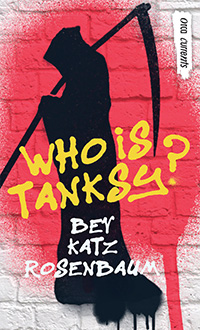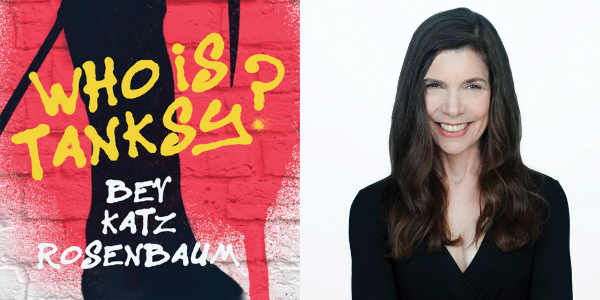
Fourteen-year-old Tanya Kofsky is invisible. She hates that no one listens to her, at home or at her new school. So as student elections get underway, Tanya starts secretly painting controversial images on the walls of the school. Soon everyone is talking about this amazing artist with a lot to say.
The election results turn out to be a catalyst for more rebellion. And not just from students. Teachers, tired of the principal’s authoritarian leadership, start promoting self-expression. Even the lunch ladies join in, ignoring the strictly controlled menu and serving more nutritious and culturally diverse fare.
But can this revolution effect real change? Or will speaking up lead to complete disaster?
Who is Tanksy? is a middle grade Hi-Lo novel by Bev Katz Rosenbaum. In this guest post for the Orca Blog, she explains where she got her inspiration for the book and what she hopes young readers can take away from it in 2020.
* * *
By: Bev Katz Rosenbaum
I’m Canadian, but on November 8th, 2016, the night of the U.S. election, I, along with many others, felt as though someone had died. The grief hit hard and fast when Donald Trump was elected President of the United States. Along with denial. How could this have happened? How could this candidate have won–the candidate who had long revealed himself to be not only completely unqualified for the job but also virulently racist and anti-Semitic, unashamedly sexist, and thoroughly corrupt?
I’m writing this post after listening to the 2020 Democratic National Committee speeches, including Barack Obama’s, which talked of how, over the past four years, Donald Trump unleashed “our worst impulses“. Indeed, since the election, teachers in both the U.S. and Canada have spoken of ‘The Trump Effect’; they’ve seen kids say and do horrid things on a scale they’ve never seen before. Here in Canada, a whole new political party was born whose leaders spewed divisive, Trump-like rhetoric. As did leaders and members of more established parties all over the world. Trump’s success gave people permission to be openly and unabashedly horrible. Hate crimes skyrocketed.
A death did occur that night—the death of democracy. That isn’t hyperbole. At this point, few would deny that Trump is mostly concerned with personal power, legalities be damned. He’s cozy with dictators and has no compunction about throwing innocent children in cages or abducting peaceful protestors with the use of a secret police force.

I knew I had to use whatever small talents I had to help combat the evil that had just been let loose in the world. Though I’d taken a very long break from writing children’s fiction, I knew almost instantly that I would write a story for young people about a school election similar to the American one. And I’d make it entertaining—lure ‘em in with what, on the surface, is a fun story about a popular dude being elected as school president over a smart female candidate.
That book, Who is Tanksy?, was published by Orca in August of 2019, as part of the Orca Currents series. In it, the Trump stand-in, Aidan Stone, is the son of his school’s (comically) authoritarian school principal. Over the course of the campaign, Stone Jr., a la Trump, shows himself to be racist and sexist and performs horribly in the election debates.
The character standing in for me, new girl Tanya Kofsky, who’s tired of dealing with all the Aidan Stones of the world, knows Stone could—and probably will—still win. She wants to do whatever she can to help turn the tide against him. A graffiti artist, she starts painting images on the school walls mocking the Stones and their “ideas.” On the day of the election, of course, Stone gets his goon friends to intimidate voters. And that’s all I’ll tell you about the story!
With another American election fast upon us, it’s my fervent hope that parents, teachers and librarians will use Who is Tanksy? as a jumping off point to discuss issues surrounding elections. There are deep discussions to be had such as what ‘for the people’ means—or should mean—how we want to talk about and to each other, which election tactics are fair game and which aren’t, and many more. A teaching guide that gives just a taste of what you can do with this book is available and can be found on Orca’s website as well as my own.
I also hope the book will make young readers think about what values they hold dear and what kind of country they want to live in, because before you know it they will be of voting age. Keep in mind that while Orca Currents novels are written specifically to appeal to striving readers, they are loved by readers of all stripes (ages 9-14) for their fast pace, high-interest topics and contemporary themes.
And come November, let’s hope the future is bright once more for the American people as well as for the student population of Tanya Kofsky’s junior high school!

Bev Katz Rosenbaum is the author of several works of fiction. She has worked in-house as an editor for book publishers and magazines and has taught writing at the college level. Currently she juggles writing children’s books with freelance editing. Bev lives in Toronto.


